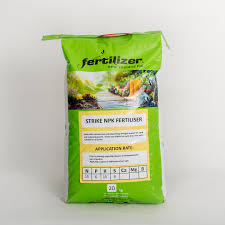
Aug . 12, 2024 03:02 Back to list
Understanding the Benefits of Water Soluble Urea Phosphate Fertilizers for Optimal Plant Growth and Nutrition
Understanding Water-Soluble Fertilizer Urea Phosphate 17-44-0
Fertilizers play a vital role in agriculture, significantly affecting the yield and quality of crops. Among the various types of fertilizers available, water-soluble fertilizers have gained considerable popularity due to their efficiency and ease of application. One particularly noteworthy formulation is Urea Phosphate 17-44-0, which is known for its high nutrient content and specific benefits in crop production.
Composition and Benefits of Urea Phosphate 17-44-0
Urea Phosphate contains nitrogen (N) and phosphorus (P), two essential macronutrients crucial for plant growth. The “17-44-0” designation indicates that this fertilizer contains 17% nitrogen and 44% phosphorus, while the zero indicates that there is no potassium (K) in this formulation. This high phosphorus content is especially valuable for promoting root development, flowering, and fruiting. Phosphate is key in energy transfer within the plant, aiding in photosynthesis and the synthesis of nucleic acids and ATP (adenosine triphosphate), which are vital for cellular energy transfer.
The nitrogen component in Urea Phosphate contributes to the overall growth and vigor of plants. It is involved in the synthesis of amino acids and proteins, essential aspects of plant structure and metabolism. The combination of these nutrients makes Urea Phosphate an effective choice for various crops, particularly in early growth stages where strong roots and vigorous vegetative growth are critical.
Application Methods and Considerations
One of the significant advantages of Urea Phosphate 17-44-0 is its solubility in water, allowing for easy application through fertigation and foliar spraying. Fertigation, which involves dissolving the fertilizer in irrigation water, enables precise nutrient delivery directly to the root zone, enhancing nutrient uptake and minimizing waste. This method is particularly beneficial in high-value crops, where optimal nutrient management can lead to increased marketable yield.
water soluble fertilizer urea phosphate up 17-44-0 fertilizer

When using Urea Phosphate, it is essential to consider the specific nutrient requirements of the crops being cultivated. Soil tests can help determine the existing nutrient levels, allowing farmers to tailor their fertilizer applications effectively. While Urea Phosphate is a high-quality source of nitrogen and phosphorus, it is important to evaluate the need for additional potassium, especially in crops that require a balanced nutrient profile for optimal growth.
Environmental Impact and Sustainability
The use of water-soluble fertilizers like Urea Phosphate 17-44-0 must be managed responsibly to minimize environmental impacts. Overapplication can lead to nutrient runoff, contributing to water pollution and harmful algal blooms in nearby water bodies. Therefore, employing best management practices, such as following recommended application rates and timing, is crucial. Integrated nutrient management strategies that combine organic and inorganic fertilizers can enhance soil health and reduce reliance on chemical inputs.
Moreover, the increasing focus on sustainable agriculture emphasizes the importance of using fertilizers efficiently. By employing precision agriculture techniques, farmers can optimize the application of Urea Phosphate and other fertilizers, ensuring that crops receive the nutrients they need without excess application.
Conclusion
In conclusion, Urea Phosphate 17-44-0 is a potent water-soluble fertilizer that provides essential nutrients for crops, promoting healthy growth and high yields. Its ease of application through fertigation and adaptability to various crops makes it a valuable tool in modern agriculture. However, responsible management and application practices are crucial to maximizing its benefits while minimizing environmental impacts. Through careful planning and execution, Urea Phosphate can significantly contribute to sustainable agricultural practices and enhanced food production.
-
10 10 10 Fertilizer Organic—Balanced NPK for All Plants
NewsJul.30,2025
-
Premium 10 10 10 Fertilizer Organic for Balanced Plant Growth
NewsJul.29,2025
-
Premium 10 10 10 Fertilizer Organic for Balanced Plant Growth
NewsJul.29,2025
-
Premium 10 10 10 Fertilizer Organic for Balanced Plant Growth
NewsJul.29,2025
-
50 Pound Bags of 13-13-13 Fertilizer for All Plants – Bulk & Organic Options
NewsJul.28,2025
-
High-Efficiency 15-30-15 Granular Fertilizer for Healthy Crops
NewsJul.28,2025
